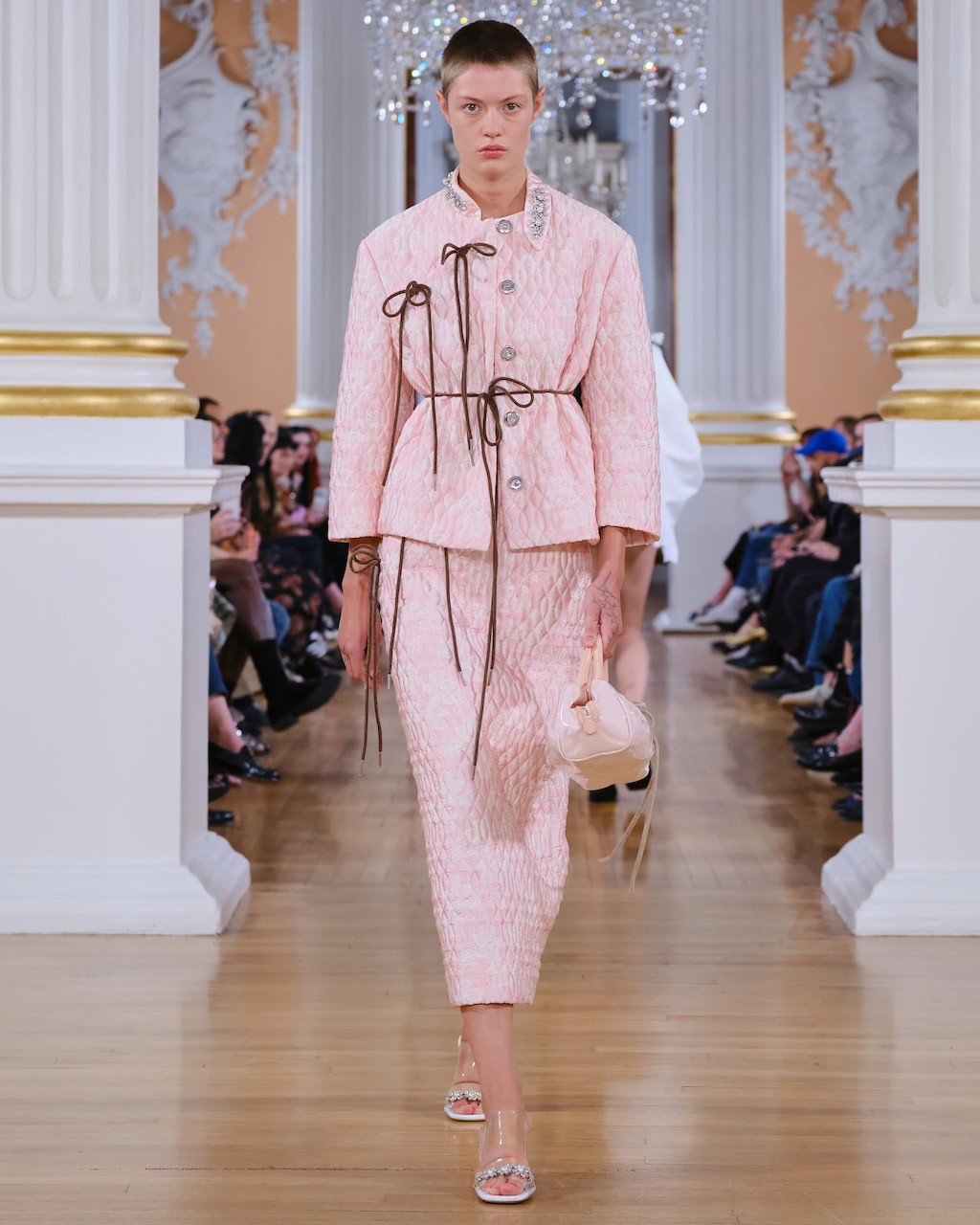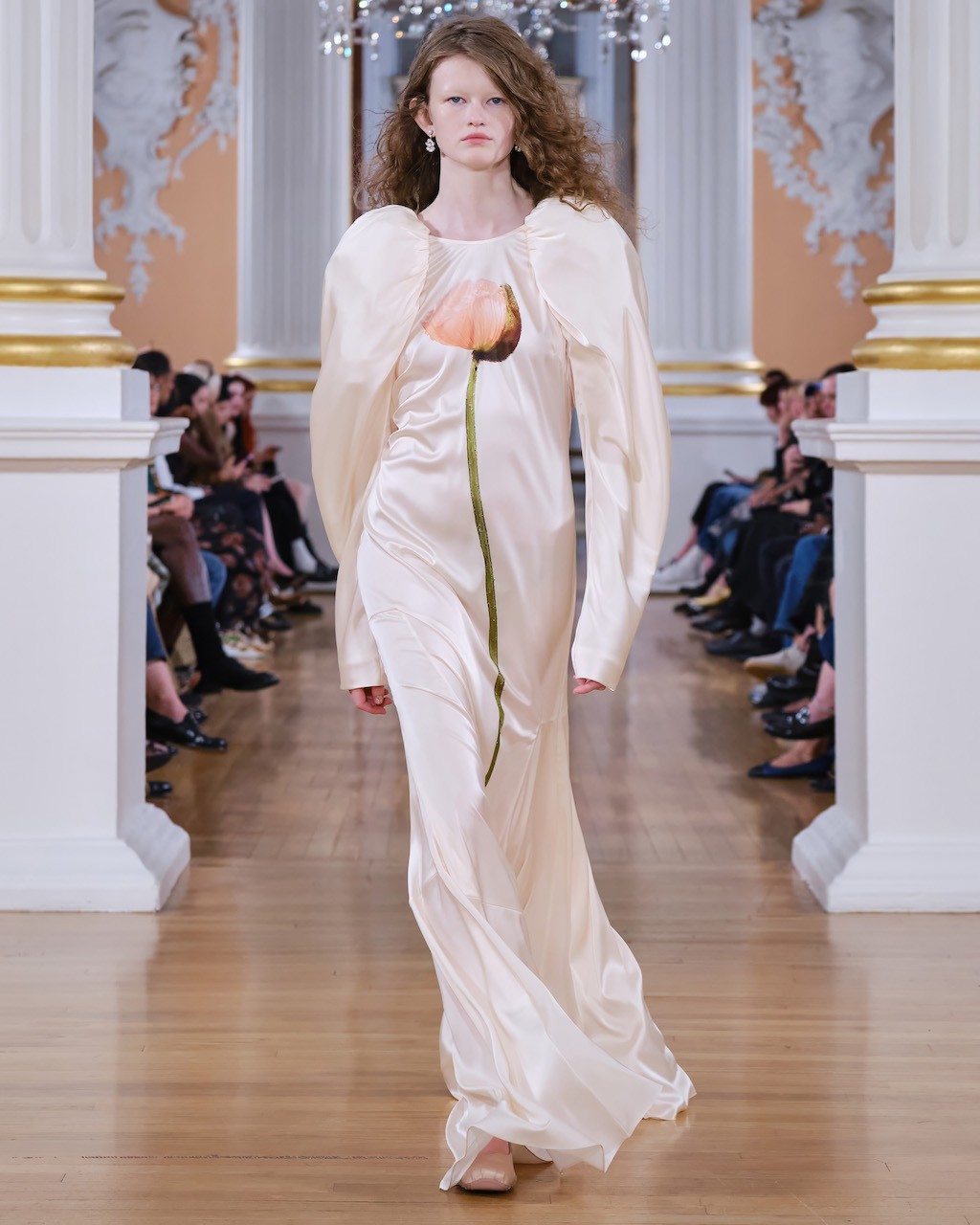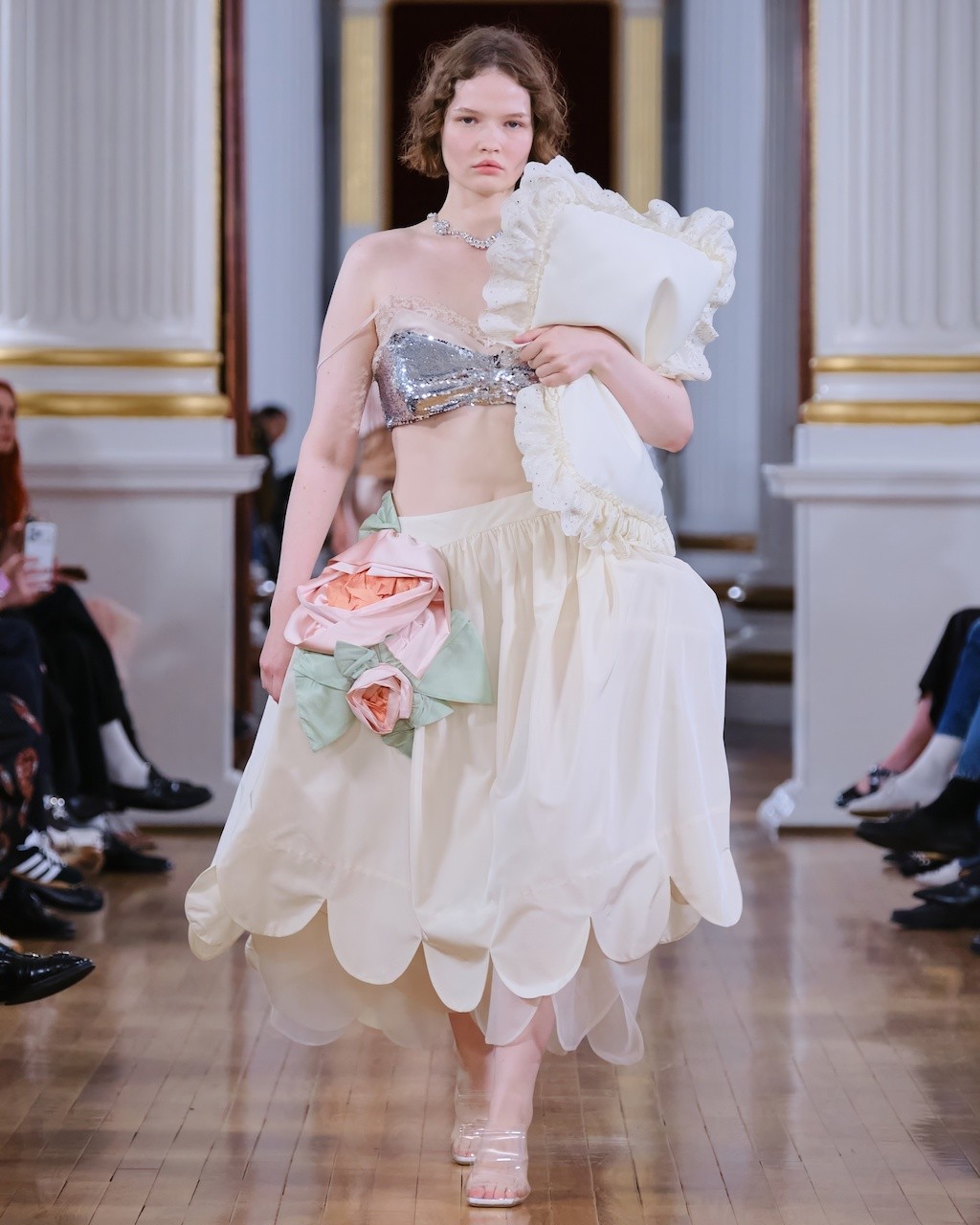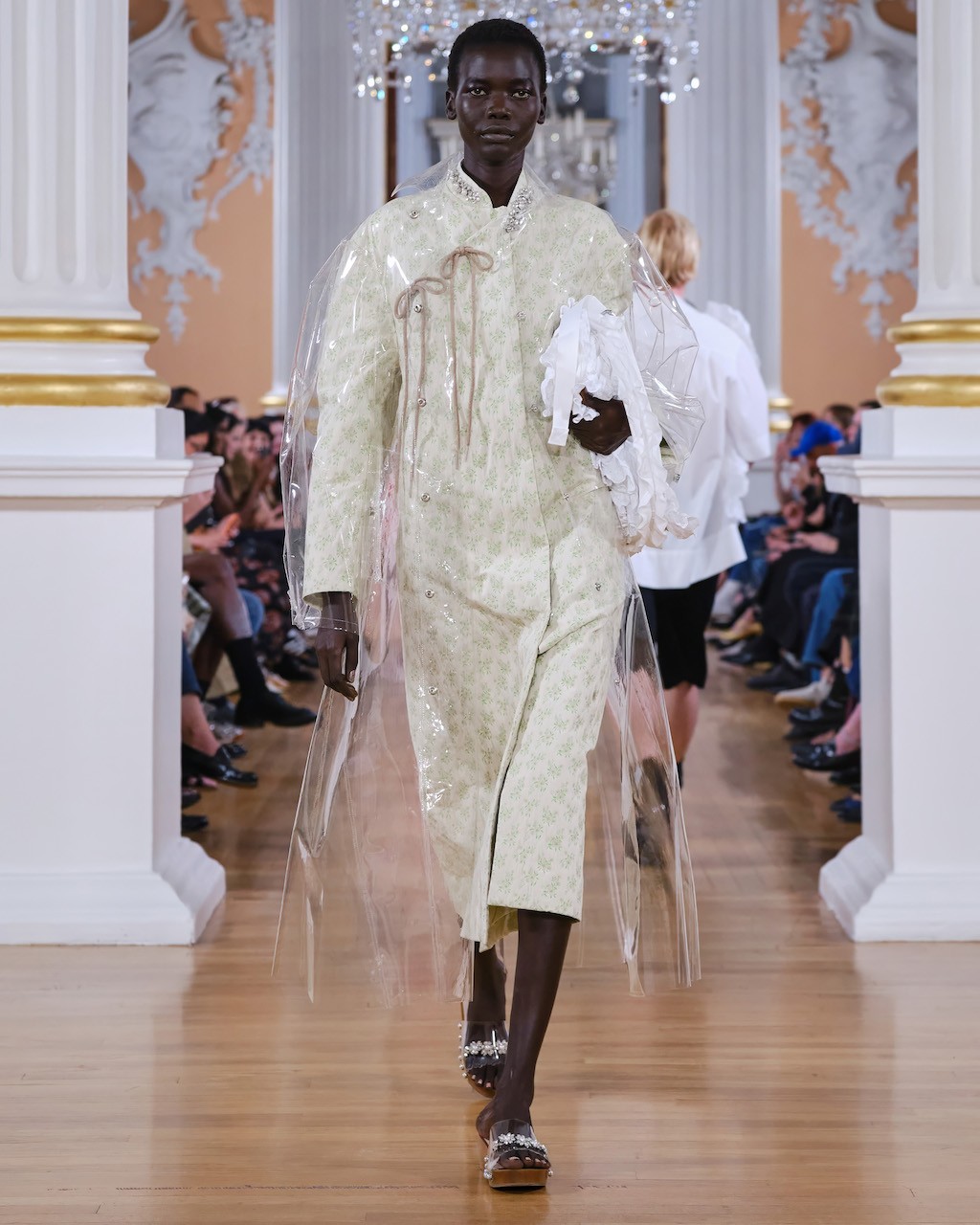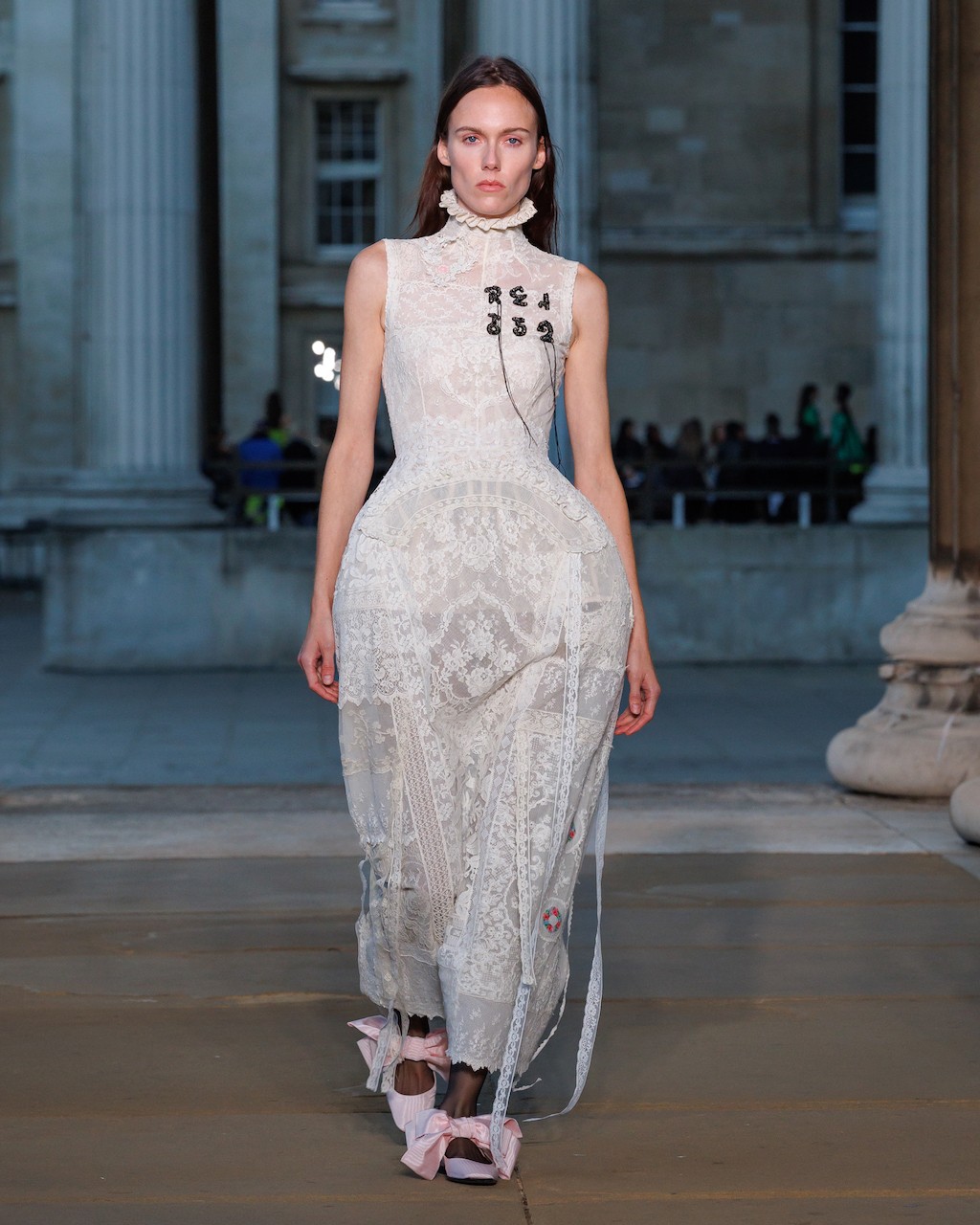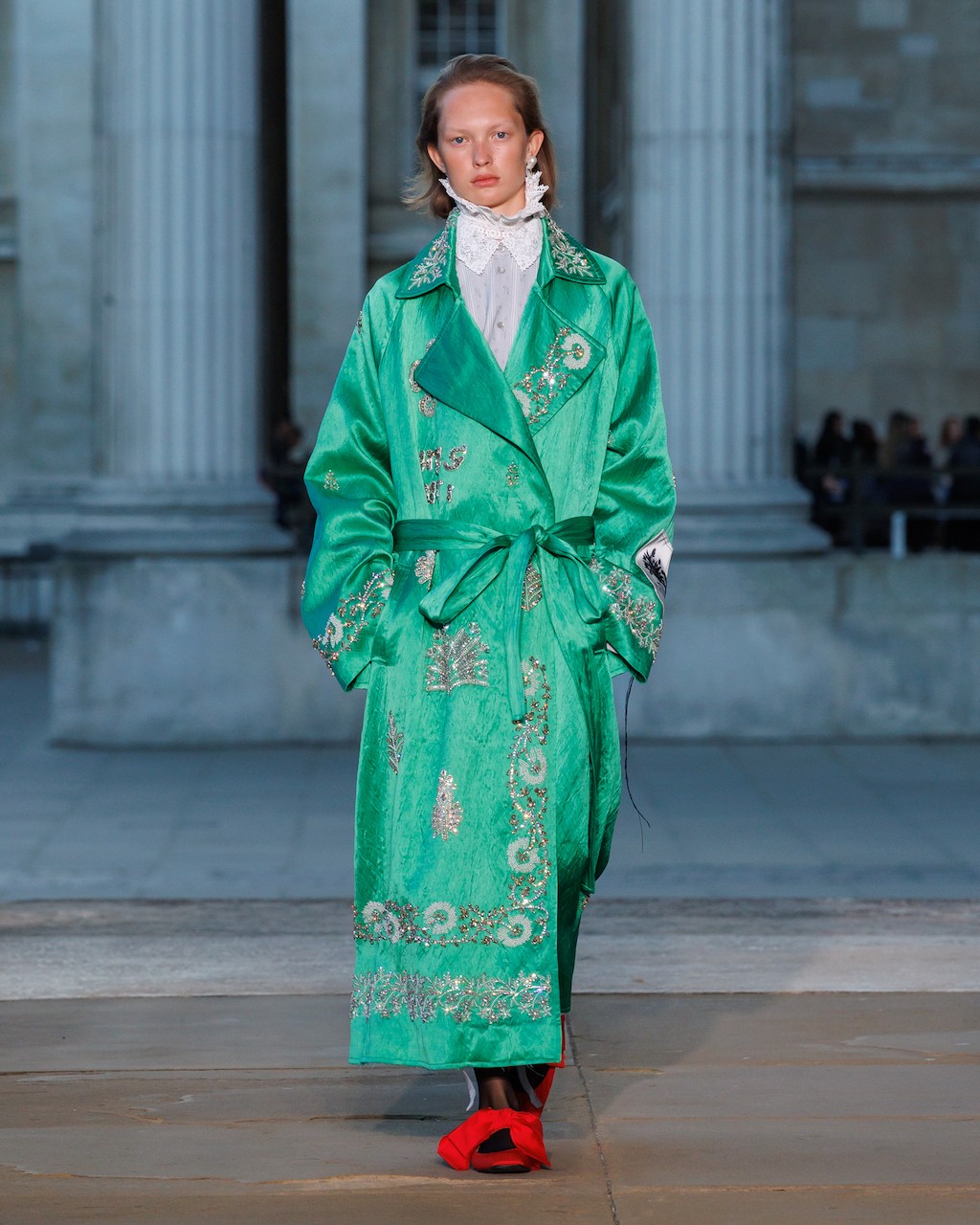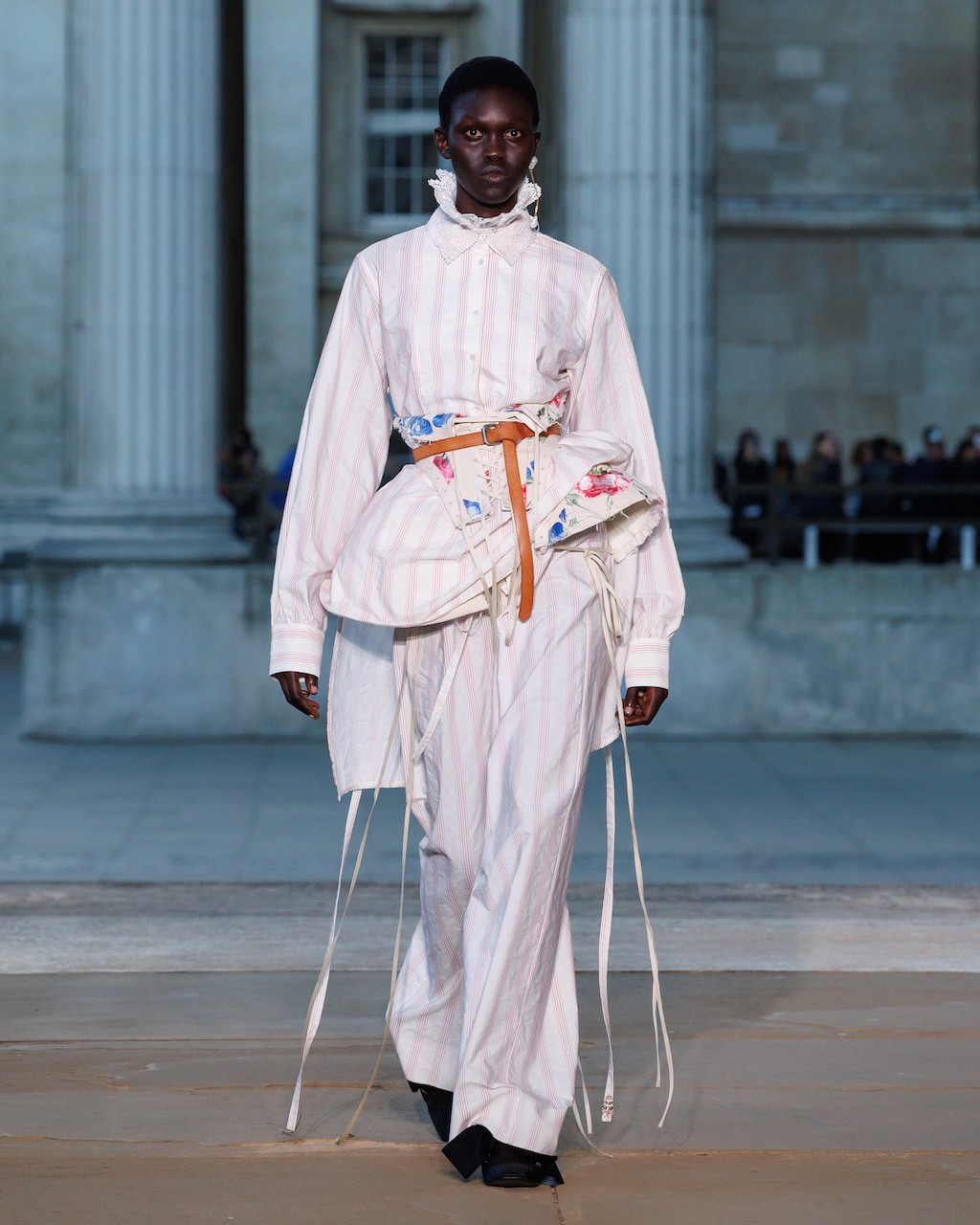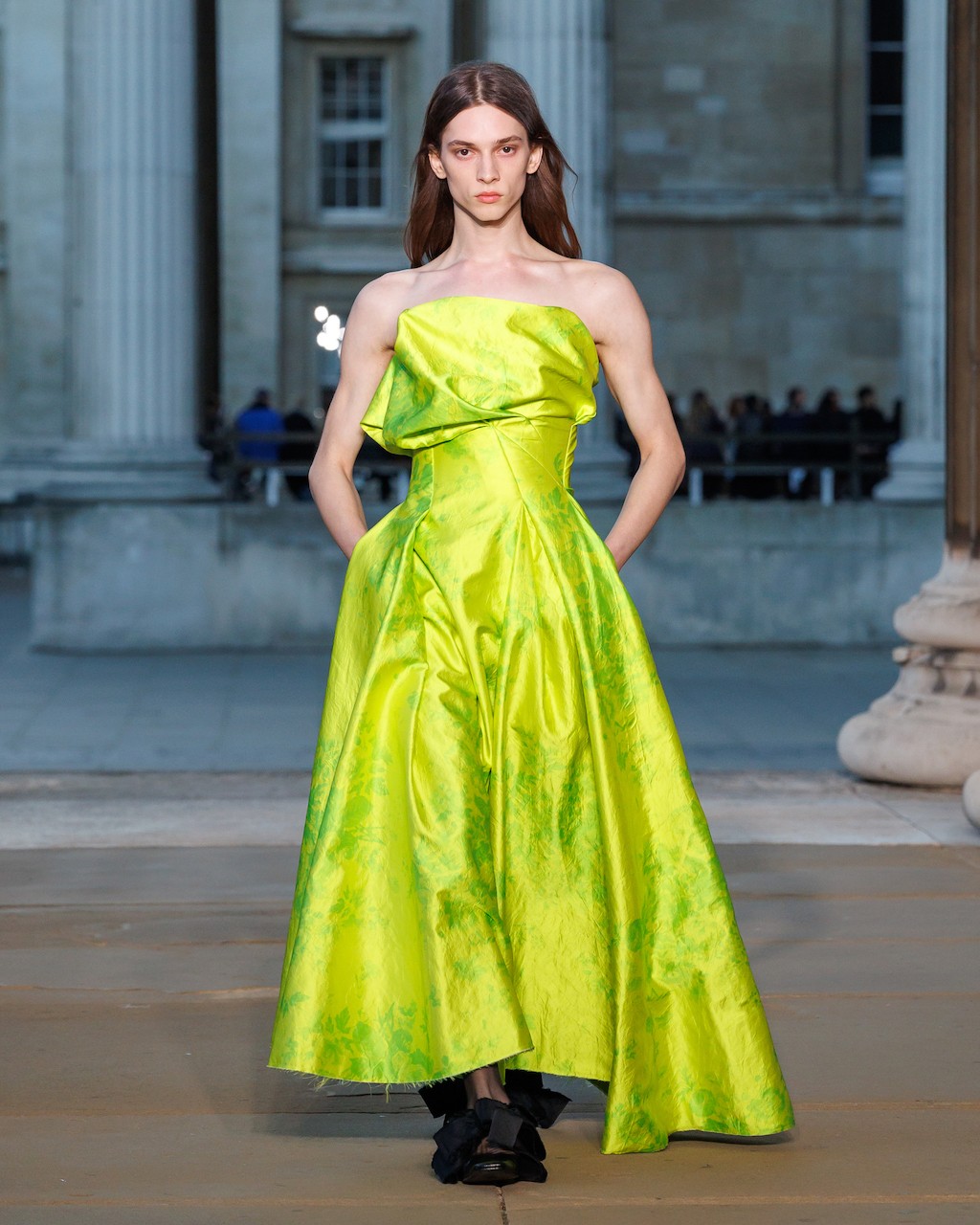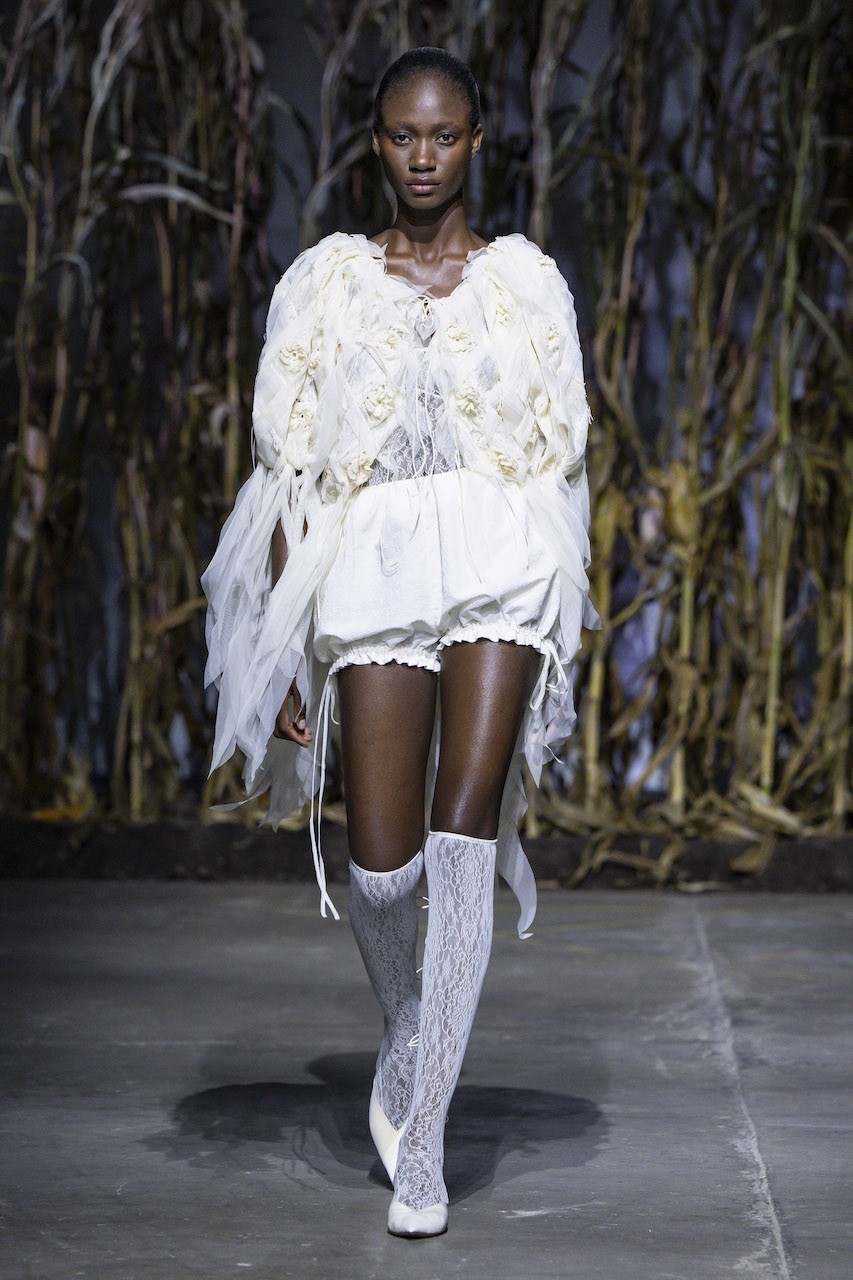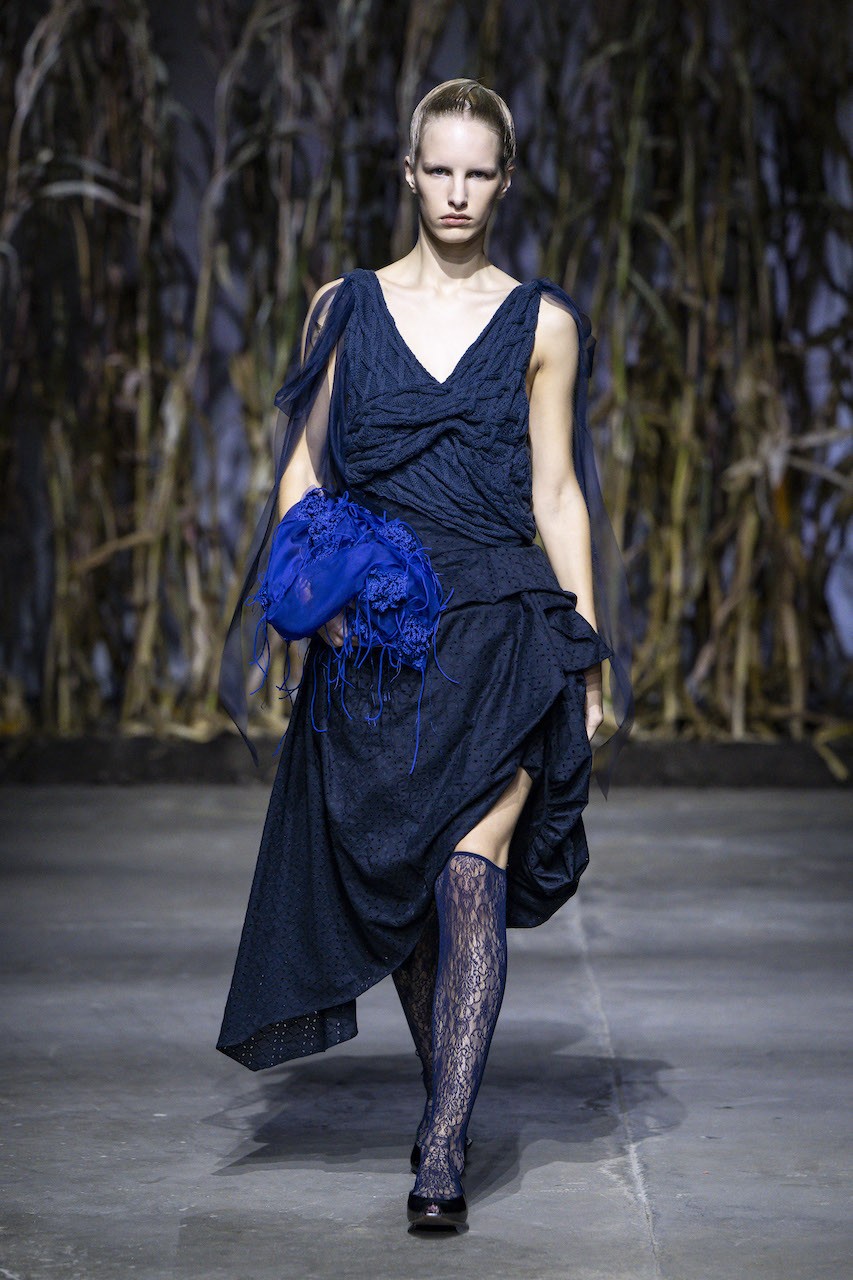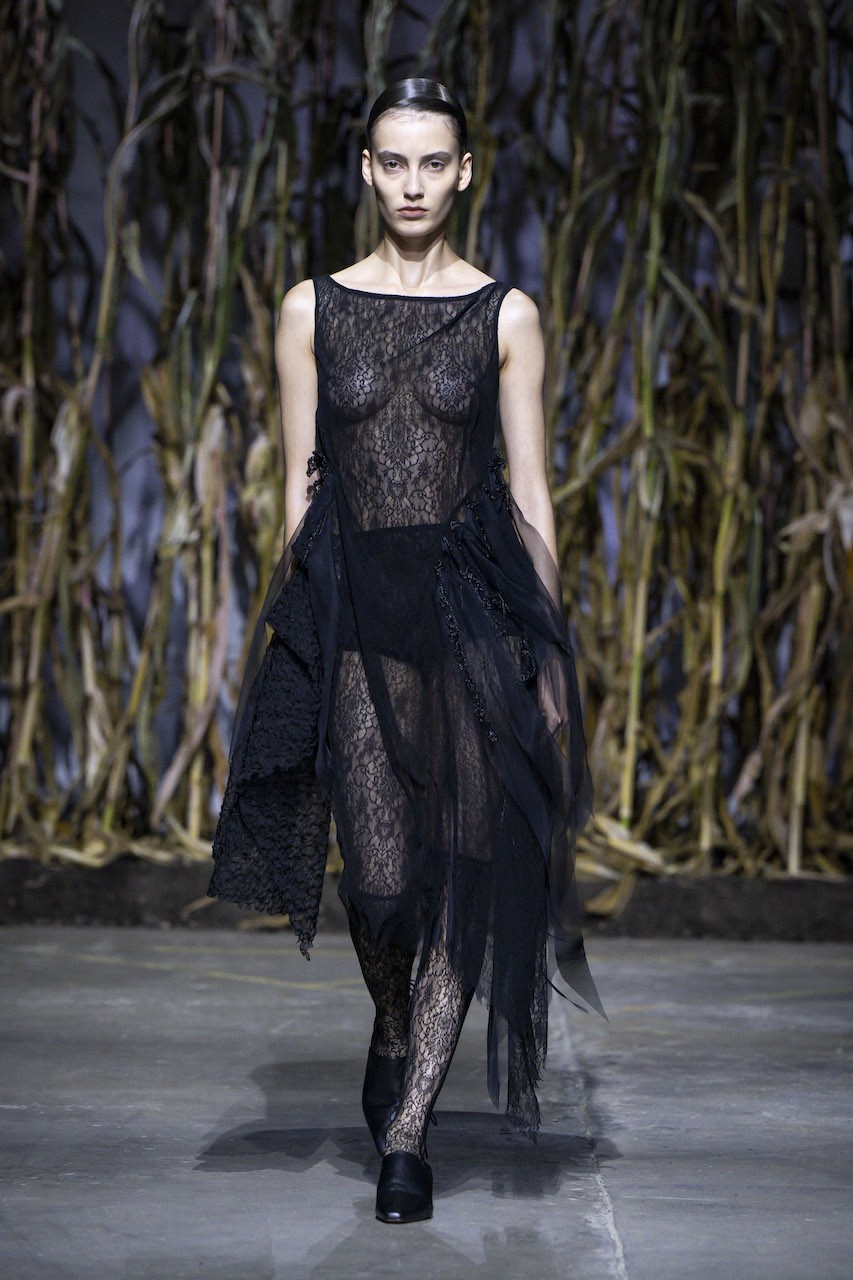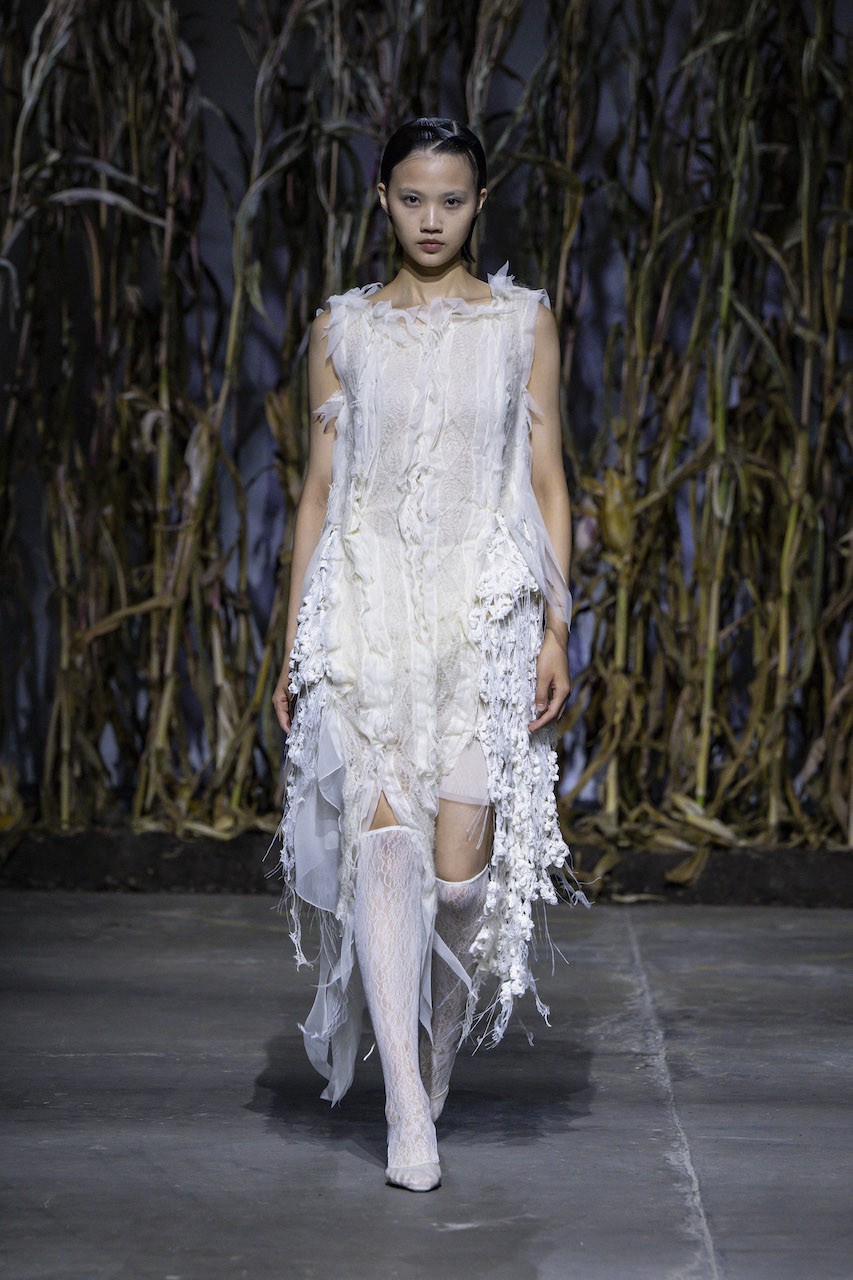London Fashion Week SS26: The Beauty of Uncertainty
Fashion — 29.09.25
Words: Sarah Kennelly
At London Fashion Week, Spring/Summer ’26 saw designers abandon restraint and plunge into the emotional depths of the human experience. Across the runways, clothes became vessels for vulnerability: awkwardness, grief, reverie, longing, and joy were all stitched into the seams.
Minimalism had no place here—instead, collections leaned into unbridled expression, not as excess, but as a means of revealing the intricacies of our most conflicting feelings. Fabrics swelled, sequins shimmered, embroidery unfurled like dreamscapes. Garments felt less like armor and more like mirrors, reflecting the true depths of our innermost selves.
SIMONE ROCHA
- Photos by Ben Broomfield
Among the most anticipated runways of the season, the Irish designer’s showcase was a debutante’s ball beautifully out of step. Staged in the ornate halls of Mansion House, the collection embraced the uncomfortable terrain of youth. Sequin gowns slipped from shoulders, models clutched silk pillows like fond relics from childhood. Lilies bloomed across crinolines, pearls dangled from Crocs, and tiaras perched at awkward angles—each detail refracting the bittersweet awkwardness of teendom. Drawing from Justine Kurland’s Girl Pictures and Maureen Freely’s My Dress Rehearsal, Rocha staged a ritual of becoming, where girlhood’s insecurities collided with ballroom grandeur, producing something at once tender and defiant.
RICHARD QUINN
- Images courtesy of Richard Quinn
Inspired by the opera, opener Naomi Campbell set the tone for a night of drama. A live orchestra underscored gowns that entwined fantasy with courtly dress: velvet cut tight to the body, skirts swelling into sculptural arcs, capes that trailed like twilight across the floor. Everywhere, rosettes bloomed–at throats, on gloves, stitched into bows–adding whimsical interruptions to the grandiose designs. Quinn’s silhouettes leaned monumental, but that was the point; an embodiment of what would happen if couture dreamed out loud.
ERDEM
- Images courtesy of Erdem
Leaning into the metaphysical, Erdem Moralıoglu staged a séance at the British Museum, invoking the visions of Hélène Smith—a 19th-century medium who fantasized lives reborn as queens and Martian travelers. The collection fused history with something of another dimension: pannier skirts swelled and collapsed, lace appeared half-rescued, half-decayed. Satin was charged with an otherworldly light while embroidery traced symbols that felt closer to hallucination than decoration. In embracing contradictions–fragility and strength, past and future–Moralıoglu invited us to let go of certainty, lean into vulnerability, and honor the strange and beautiful logic of our dreams.
PAULINE DUJANCOURT
- Images courtesy of Pauline Dujancourt
The Parisian designer’s presentation was a meditation on loss, resilience, and the fragile beauty of creation. Crochet flowers, knitted argyle, and airy tulle wove a narrative that mourned the loss of a close friend and reflected grief’s non-linear path of despair and joy. A gown in mourning black opened the show, while a swan-like white closed it, holding the tension between sorrow and hope. Inspired by Chekhov’s The Seagull, the collection holds that creativity can carry us through what feels unbearable. Perhaps the most evocative part was not the spectacle, but the honesty of the garments which emulate fragility and uncertainty.
